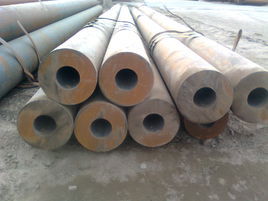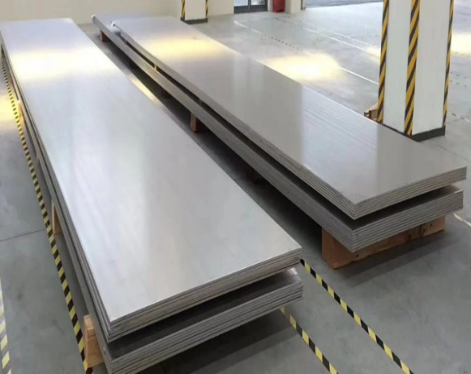Seamless steel pipes or welded steel pipes with a ratio of outer diameter to wall thickness of less than 20 are called thick-walled steel pipes. It is mainly used as octg pipe, petroleum geological drilling pipe, cracking pipe for petrochemical industry, boiler pipe, bearing pipe, high-precision structural pipe for automobile, tractor and aviation, etc.
Welding method of thick-walled steel pipe
To weld thick-walled steel pipes, first clean the oil, paint, water, rust, etc. of the weld joints, and then open the groove according to the wall thickness, which is generally 1-1.5 times the diameter of the electrode or wire. Spot welding at least three points, generally four points is more convenient. . If the wall of the steel pipe is thick, it should be layered, at least two layers, and the second layer can only be welded after the first layer is completely welded.
Process flow of thick-walled steel pipe
Round tube billet→heating→piercing→three-roll cross rolling, continuous rolling or extrusion→pipe removal→sizing (or reducing)→cooling→straightening→hydraulic test (or flaw detection)→marking

Weld reinforcement of thick-walled steel pipe
1. When the wall thickness of the steel pipe is not greater than 12.5mm, the weld reinforcement shall not be greater than 3.0mm;
2. When the wall thickness of the steel pipe is greater than 12.5mm, the weld reinforcement shall not be greater than 3.5mm.
Bending degree of thick-walled steel pipe
1. Steel pipes with a nominal outer diameter of not more than 168.3mm should be straight or bend according to the shell-strengthening agreement between the supplier and the buyer;
2. For steel pipes with a nominal outer diameter greater than 168.3mm, the bending degree shall not exceed 0.2% of the total length of the steel pipe.
The difference between thick wall steel pipe and thin wall steel pipe
1. The biggest difference between thick-walled steel pipes and thin-walled steel pipes is the thickness of the steel pipe wall. Generally speaking, thin-walled steel pipes are cold-drawn, while thick-walled steel pipes generally use hot-rolled technology.
2. If it is distinguished by units of measurement. Then, it is generally believed that the wall thickness/diameter equal to 0.05 is the watershed between thick-walled steel pipes and thin-walled steel pipes, and those with wall thickness/pipe diameters less than 0.05 are thin-walled steel pipes, and those larger than them are thick-walled steel pipes.
3. In terms of application, thin-walled steel pipes are mostly used for pipelines. And thick-walled steel pipes are mostly used as blanks for hollow parts. Used on pressure-bearing and important pipelines.
Welding method of thick-walled steel pipe
To weld thick-walled steel pipes, first clean the oil, paint, water, rust, etc. of the weld joints, and then open the groove according to the wall thickness, which is generally 1-1.5 times the diameter of the electrode or wire. Spot welding at least three points, generally four points is more convenient. . If the wall of the steel pipe is thick, it should be layered, at least two layers, and the second layer can only be welded after the first layer is completely welded.
Process flow of thick-walled steel pipe
Round tube billet→heating→piercing→three-roll cross rolling, continuous rolling or extrusion→pipe removal→sizing (or reducing)→cooling→straightening→hydraulic test (or flaw detection)→marking

Weld reinforcement of thick-walled steel pipe
1. When the wall thickness of the steel pipe is not greater than 12.5mm, the weld reinforcement shall not be greater than 3.0mm;
2. When the wall thickness of the steel pipe is greater than 12.5mm, the weld reinforcement shall not be greater than 3.5mm.
Bending degree of thick-walled steel pipe
1. Steel pipes with a nominal outer diameter of not more than 168.3mm should be straight or bend according to the shell-strengthening agreement between the supplier and the buyer;
2. For steel pipes with a nominal outer diameter greater than 168.3mm, the bending degree shall not exceed 0.2% of the total length of the steel pipe.
The difference between thick wall steel pipe and thin wall steel pipe
1. The biggest difference between thick-walled steel pipes and thin-walled steel pipes is the thickness of the steel pipe wall. Generally speaking, thin-walled steel pipes are cold-drawn, while thick-walled steel pipes generally use hot-rolled technology.
2. If it is distinguished by units of measurement. Then, it is generally believed that the wall thickness/diameter equal to 0.05 is the watershed between thick-walled steel pipes and thin-walled steel pipes, and those with wall thickness/pipe diameters less than 0.05 are thin-walled steel pipes, and those larger than them are thick-walled steel pipes.
3. In terms of application, thin-walled steel pipes are mostly used for pipelines. And thick-walled steel pipes are mostly used as blanks for hollow parts. Used on pressure-bearing and important pipelines.









